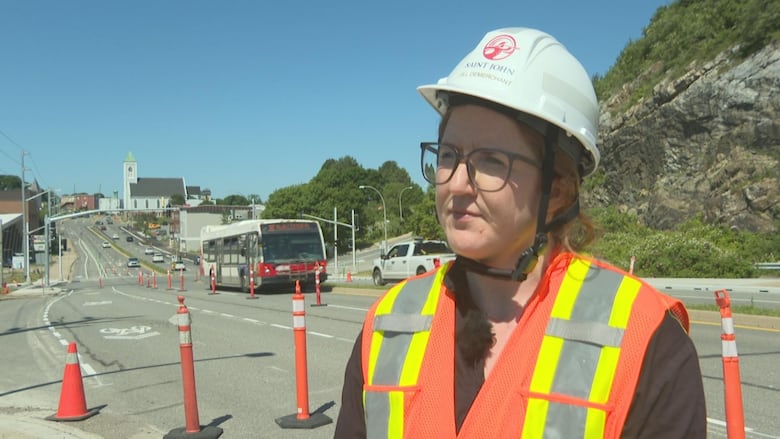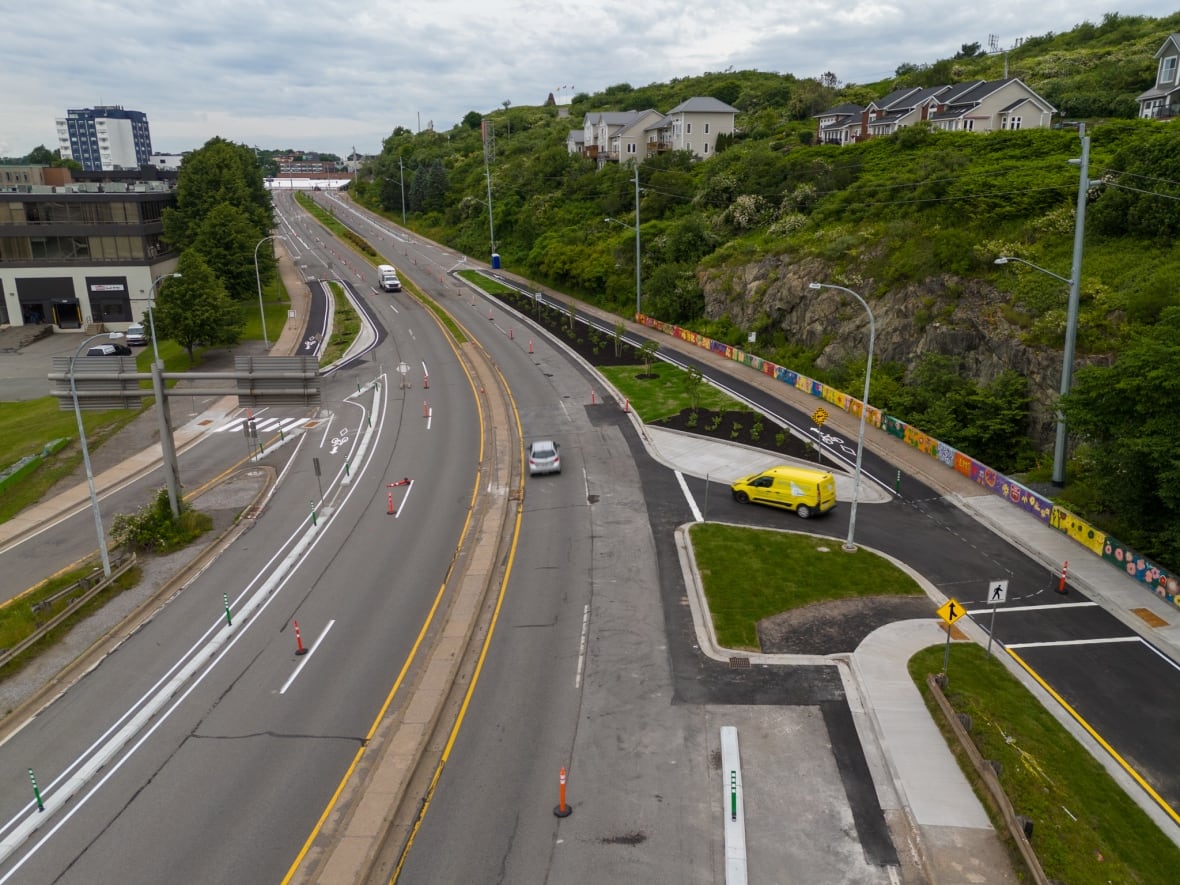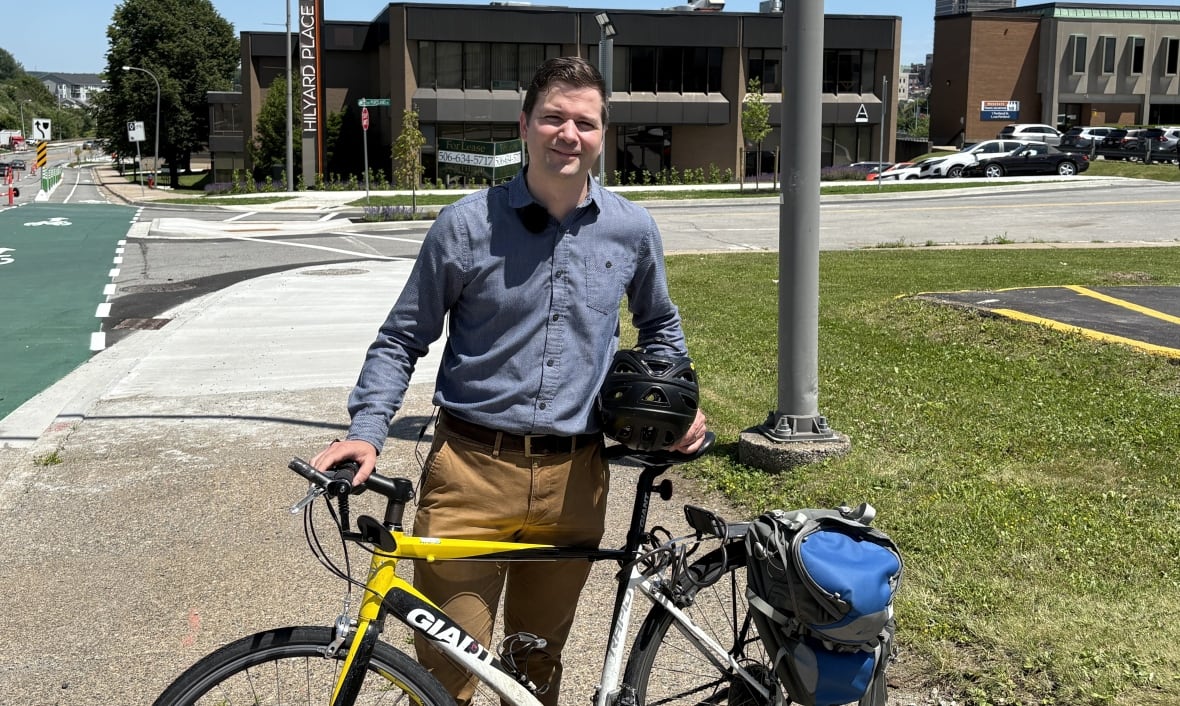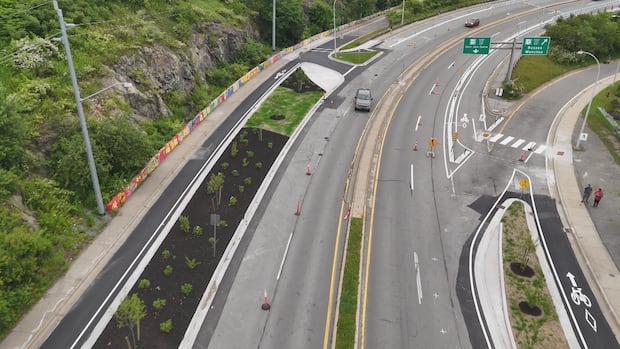Main Street project fixes decades-old errors in key Saint John route
Construction, which includes a protected bike path, is expected to be finished in August.

An upgrade of Main Street and the Main Street Viaduct, one of the largest projects of the Saint John construction season, promises major improvements — and corrects some old mistakes.
When the work is completed in late summer, Main Street speed limits will have dropped to 50 kilometres an hour from 60, and the number of lanes reduced to four from six — two in each direction.
Accessible infrastructure like audible traffic lights and tactile sidewalks are being added to the street, along with green space.
"This is a really important connector for two major, very densely populated neighbourhoods in the city and not everyone has access to a vehicle," said city traffic engineer Jill DeMerchant.
"We're also introducing other modes of transportation for folks who don't want to drive. So it's providing an equitable space for all of the mode users in the city."
The biggest changes will be the city's first extensive protected bike lane, replacing the outer two lanes in both directions. Both sides will have concrete barriers dividing the bike and vehicle lanes.

Construction started in May with traffic reduced to one lane on each side for much of the summer and is slated for completion in August, DeMerchant said.
The project was announced in 2022 but delayed in 2023. When the city announced construction would start this summer, the plan received a range of feedback on social media, where the mayor and city staff posted updates related to the project.
Some posters praised the project. Others said it should have been put on hold until Harbour Bridge repairs — now slated for a 2028 completion — were finished or called the project a waste of taxpayer money.
Saint John currently has three other projects to increase accessibility at intersections and five that are including bike lanes and active transportation upgrades.
The Main Street project comes at a cost of more than $3.8 million, including $1.76 million from the federal government. The province is providing $495,000.
DeMerchant said the city's traffic data shows the lane reductions on Main Street won't have significant impacts on traffic.
Project bigger than bike lanes, says cycling advocate
Cycling advocate Nick Cameron said the bike lanes will make the street safer for cyclists, and the traffic-flow benefits will carry over widely.
"I think sometimes these projects get characterized too much as a cycling only project," he said.
"With these lane reductions, what you're doing is you're reducing the number of conflict points."

Both DeMerchant and Cameron — who has previously worked in regional planning — said the viaduct was constructed to handle more vehicle traffic than it ever regularly sees.
"Six lanes never made sense," Cameron said. "By reducing that, it's reducing conflict points for drivers, reducing the crossing distance for pedestrians and increasing sight-line visibility for everyone."
Correcting history's mistakes
DeMerchant said a big part of the project is correcting planning mistakes made in the 1960s, when the city "had a vision of what they thought the city was going to look like."
"For that purpose , they decided to take Main Street … and expand that out to [six lanes] because they anticipated that the vehicle volumes would expand to a point where that would be necessary. Looking back on that now we see that that wasn't the case."
Benjamin Peterson, a Saint John resident who researched Maritime urban planning history for his master's degree, said the 1960s were years of urban renewal in Saint John and beyond. The expansion of Main Street had consequences for what was once a thriving commercial area of the city.
"You had these big programs with the federal, provincial and municipal governments expropriating houses, demolishing neighbourhoods to make room for transportation infrastructure for commercial development for these big projects," Peterson said.
These developments included a wider Main Street, the Place 400 office building and the Lord Beaverbrook Rink among others. But many projects, Peterson said, didn't get built.

"As we sort of come to terms with maybe some of these projects that were first dreamed up in the [1950s-1960s] as they didn't come to fruition or as things change, I think it's very reasonable to go back to the drawing board and to revise some of the infrastructure," he said.
Cameron said the change will "activate the streetscape" just by opening it to more people, including those in vehicles.
"But the more people we can get out of their cars — and not just passing through the area, but actually meandering — more businesses along those areas will have more of those serendipitous unplanned visits," he said.
"I think it's going to feed into this rebirth of the area."


